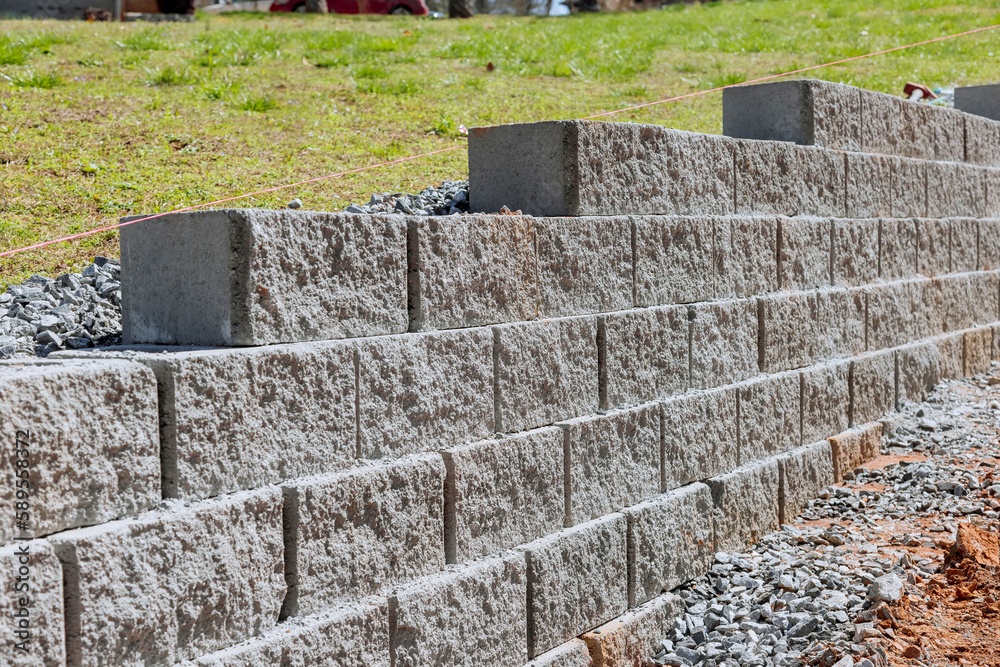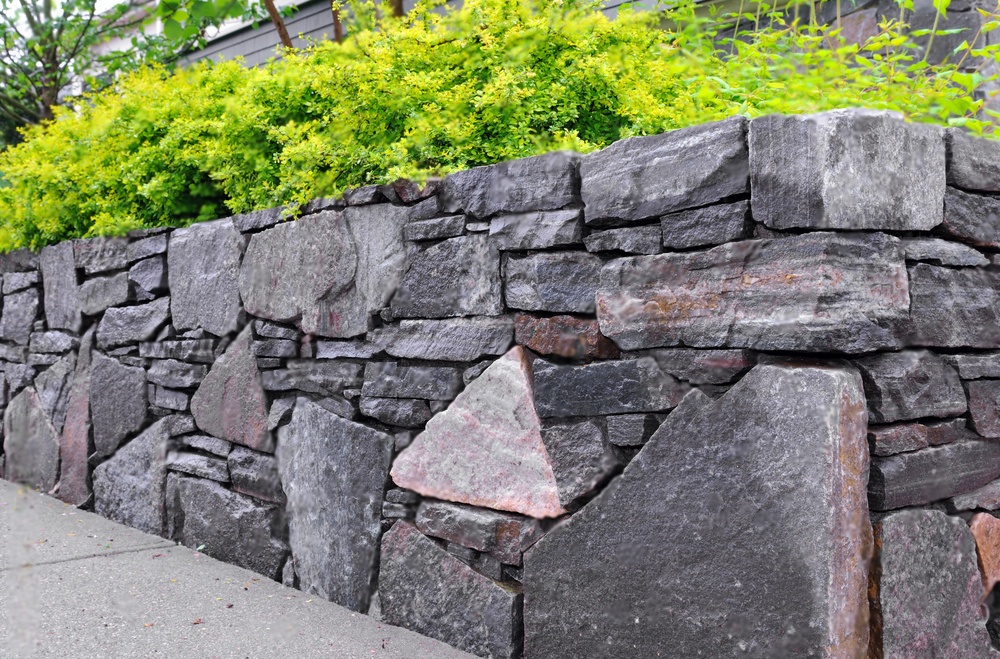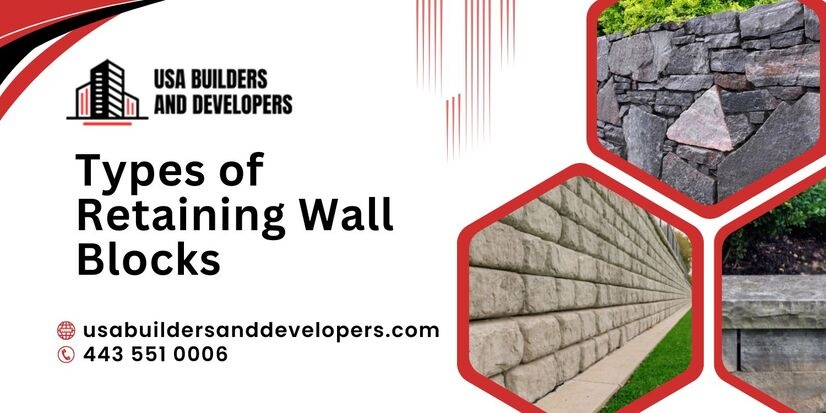Retaining walls are not just functional structures; they are key design elements that enhance the aesthetic appeal of your landscape. Whether you are managing soil erosion, creating terraced gardens, or building decorative garden features, choosing the right type of retaining wall block is critical. The type of block you select affects durability, ease of installation, cost, and the overall visual appeal of your project.
For expert guidance and high-quality installation, homeowners trust USA Builders and Developers, who provide professional landscaping solutions and advice on selecting the best types of retaining wall blocks for any project.
What Are Retaining Wall Blocks?
Retaining wall blocks are modular materials designed to hold back soil and prevent erosion while providing structural stability. They come in a variety of sizes, shapes, textures, and colors, allowing for both functional and decorative use. The choice of block often depends on the wall’s height, purpose, design preference, and budget.
Retaining wall blocks can be used in residential, commercial, and public spaces, making them versatile solutions for landscaping and construction projects.
Benefits of Using Retaining Wall Blocks
Before diving into the types, it’s important to understand why different types of retaining wall blocks are favored in modern landscaping:
Flexibility: Suitable for various terrains, slopes, and landscape styles.
Durability: Most retaining wall blocks are made from concrete, stone, or clay, offering long-lasting strength.
Ease of Installation: Many blocks are designed to interlock or stack easily, reducing labor costs.
Aesthetic Appeal: Available in multiple colors and textures, they enhance the visual appeal of your garden or yard.
Low Maintenance: Once installed, retaining wall blocks require minimal upkeep compared to other materials like timber.


1. Concrete Retaining Wall Blocks
Concrete retaining wall blocks are among the most widely used materials in landscaping, prized for their precision manufacturing that ensures uniform size, shape, and consistent quality for a seamless and durable installation.
Features
- Variety of Shapes: From rectangular to interlocking designs.
- Durability: Can withstand harsh weather conditions.
- Color Options: Available in neutral and natural tones to match different landscapes.
Best Use
Concrete blocks are ideal for both residential and commercial projects, especially for mid-height walls (3–6 feet). They are also suitable for garden edging, terraces, and large-scale landscaping.
2. Natural Stone Retaining Wall Blocks
Natural stone blocks add an organic, timeless elegance to any landscape, meticulously cut or shaped from durable materials such as granite, limestone, sandstone, or fieldstone, offering both beauty and long-lasting strength.
Features
- Unique Appearance: Each block has a distinct color and texture.
- Strength: Extremely durable, especially granite and limestone.
- Eco-Friendly: Natural material with minimal processing.
Best Use
Perfect for decorative walls, garden pathways, and landscape projects where natural beauty is a priority. They are often used in high-end landscaping to create a premium look.
3. Interlocking Retaining Wall Blocks
Interlocking retaining wall blocks are designed to fit snugly together without the need for mortar. The interlocking system provides structural stability while simplifying installation.
Features
- Easy Installation: Blocks snap together, reducing construction time.
- Versatility: Suitable for curved walls, terraces, and slopes.
- Durable: Made from concrete or composite materials.
Best Use
Ideal for DIY projects, residential landscapes, and moderate-height walls. Interlocking blocks are a favorite for homeowners looking for efficient and reliable solutions.
4. Segmental Retaining Wall Blocks
Segmental retaining wall blocks (SRWs) are engineered units that provide both strength and aesthetic appeal. They are designed to create curved, straight, or tiered walls.
Features
- No Mortar Needed: SRWs rely on gravity and interlocking design.
- Flexible Design: Can be stacked to accommodate slopes.
- Range of Sizes: Available in small, medium, and large blocks.
Best Use
Segmental blocks are ideal for both low and high retaining walls, making them perfect for residential gardens, parks, and commercial landscapes.
5. Brick Retaining Wall Blocks
Brick blocks are a timeless choice for retaining walls, seamlessly blending structural functionality with a classic, traditional aesthetic that complements a variety of landscape designs.
Features
- Aesthetic Appeal: Bricks provide a warm and timeless look.
- Durability: Fire-resistant and weatherproof.
- Versatility: Can be painted or coated for a customized finish.
Best Use
Brick retaining walls work well in smaller garden areas, patios, and decorative borders. They are less suitable for very high walls due to structural limitations.
6. Timber Retaining Wall Blocks
Timber blocks provide a natural, rustic charm to landscaping projects, while pressure-treated wood ensures long-lasting resistance to rot, insects, and weather, combining beauty with durability.
Features
- Natural Aesthetic: Complements gardens and green spaces.
- Cost-Effective: Often less expensive than stone or concrete.
- Easy Installation: Lightweight and easy to handle.
Best Use
Ideal for garden beds, small terraces, and slopes under 4 feet. Timber is not recommended for very high walls due to potential decay over time.
7. Gabion Retaining Walls
Gabion walls are wire cages filled with stones or rubble. They combine industrial strength with an organic look.
Features
- Durable: Extremely resistant to erosion and weather.
- Drainage-Friendly: Excellent for areas prone to water accumulation.
- Eco-Friendly: Uses natural stone or recycled materials.
Best Use
Gabion walls are perfect for erosion control, steep slopes, and areas requiring strong drainage solutions. They are commonly used in commercial and civil engineering projects.
8. Concrete Block Retaining Walls with Veneer
These walls use structural concrete blocks for strength and apply a decorative stone or brick veneer for aesthetic appeal.
Features
- Strength and Style: Combines durability with design flexibility.
- Customizable: Veneers can mimic natural stone, brick, or tile.
- Long-Lasting: Resistant to weather and pests.
Best Use
Ideal for homeowners seeking both strength and style. Commonly used in terraces, garden walls, and entrance features.
9. Recycled Plastic Retaining Wall Blocks
Eco-conscious homeowners may opt for recycled plastic retaining wall blocks. They are lightweight, durable, and resistant to rot.
Features
- Environmentally Friendly: Made from recycled materials.
- Low Maintenance: Resistant to moisture, insects, and decay.
- Lightweight: Easy to transport and install.
Best Use
Perfect for small garden projects, raised beds, and DIY landscaping projects with a focus on sustainability.
Comparing Retaining Wall Block Types
Here’s a summary to help you choose the best option for your project:
| Block Type | Strength & Durability | Aesthetic Appeal | Ideal Applications | Maintenance Needs |
|---|---|---|---|---|
| Concrete | High | Moderate | Mid-height walls, terraces | Low |
| Natural Stone | Very High | Very High | Premium gardens, pathways | Low |
| Interlocking / Segmental | High | High | Curved walls, tiered terraces | Low |
| Brick | Moderate | High | Garden borders, patios | Medium |
| Timber | Moderate | Natural | Low walls, garden beds | Medium to High |
| Gabion | Very High | Moderate | Steep slopes, erosion control | Low |
| Recycled Plastic | Moderate | Moderate | Small gardens, sustainable projects | Very Low |
Maintenance Tips to Extend Your Retaining Wall’s Life
Regular maintenance can help prevent costly repairs. Here are some tips:
- Inspect Regularly: Check for cracks, bulging, and drainage issues every few months.
- Keep It Clean: Pressure wash to remove dirt, algae, and stains.
- Ensure Proper Drainage: Make sure drainage systems are clear and working effectively.
- Repair Early: Address minor issues like cracks and erosion before they become major problems.
For expert masonry services, USA Builders and Developers provides comprehensive repair, installation, and maintenance services. Let us help you keep your retaining wall in top condition.
Design Ideas Using Retaining Wall Blocks
- Terraced Gardens: Use tiered walls to create flat planting areas on slopes.
- Garden Seating Walls: Low walls can double as seating in patios or backyard gardens.
- Curved Walkways: Use interlocking or segmental blocks for stylish, curved paths.
- Decorative Borders: Use brick or natural stone blocks for garden edging.
- Erosion Control: Gabion and concrete blocks are ideal for steep slopes or riverbanks.
Final Thoughts
Choosing the right type of retaining wall block is crucial for the success of your landscaping project. Concrete, natural stone, interlocking, segmental, brick, timber, gabion, and recycled blocks all offer unique benefits and aesthetics. Consider your project’s height, purpose, soil conditions, and maintenance requirements when making a choice.
With the right blocks, proper installation, and thoughtful design, your retaining wall can provide both functional support and an eye-catching feature for years to come. Investing in quality materials ensures durability, low maintenance, and enhanced landscape beauty.
Have Questions? Call Us Now!
We’re here to help—quick answers, friendly service, anytime you need!

